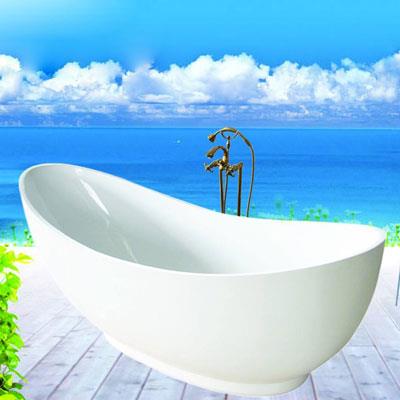Analysis of Factors Influencing the Wear Resistance of Ceramics


詳細信息
Wear-resistant ceramic materials are widely used in grinding polishing materials, wear-resistant coatings, piping or equipment linings, equipment structures, and other fields. The quality of wear resistance directly determines the safe life of mechanical equipment and parts. Common wear-resistant ceramic materials include zirconia, aluminum oxide, cubic boron nitride, Silicon nitride, boron Carbide, Silicon Carbide, and so on.
In order to obtain better wear-resistant ceramic materials, many scholars have studied the wear mechanism of ceramic materials and the factors that affect the wear-resistant properties of ceramics, and put forward many opinions and conclusions. In general, there are two factors that affect the wear resistance of ceramics: 1. The structure of the material itself; 2, external factors such as load, temperature and atmosphere. In this paper, the influence factors of wear-resistant materials are analyzed based on the structure of materials.
First, the influence of mechanical properties on the wear resistance of ceramics
When studying the wear resistance of ceramic materials in the early days, people thought that the hardness of ceramic materials had a great relationship with wear performance. Later, it was discovered that the relationship between hardness and wear of ceramics was not so obvious. For example, aluminum oxide ceramics have higher hardness than TZP zirconia ceramics, but wear resistance is not necessarily higher than TZP ceramics.
Although hardness can reflect the binding strength of the grain boundary to a certain extent, wear is eventually formed due to the material leaving the worn surface, so the hardness of the ceramic material is no longer a predictor of wear.
Studies have also reported that the brittleness of ceramic materials directly affects the wear rate. Studies have shown that with the increase of fracture toughness and hardness, the wear rate of ceramics is gradually reduced, and the better the wear resistance.
The influence of ceramic microstructure on wear resistance
In general, the microstructure of the material tends to have a great influence on the macroscopic performance of the material. Ceramic material is a sintering body composed of grains and intercrystals, and its microstructure often determines its macroscopic properties. Many studies have shown that the wear resistance of ceramic materials has a great relationship with the size of the grain, the composition of the grain boundary phase, the stress distribution on the grain boundary, the stomata, and other microscopic structures.
1. Effect of grain size on wear resistance of ceramics
Industrially, metal materials can improve their mechanical properties by refining the grain, which is called fine crystal reinforcement. The principle is mainly that the smaller the particle size of the grain, the larger the area of the grain boundary, and the more tortuous the distribution of the grain boundary, it can effectively increase the path of crack propagation, which is conducive to the stress concentration phenomenon inside the dispersed material. It has been found that grain refinement has a certain effect on the wear resistance of ceramic materials.
The wear resistance of alumina and zirconia wear-resistant ceramics was studied. It was found that the smaller grains were mainly plastic deformation and partial penetrating fracture, and the wear was less. Larger grains have greater wear and tear by breaking along the inside of the material or even pulling large grains from the inside of the material. The pulling of large size grain will cause large defects on the ceramic surface, making the material easy to cause stress concentration, resulting in crack expansion, and making the material have low stress brittle fracture.
2. Effect of porosity on wear resistance of ceramics
The stomata has a very important influence on the performance of ceramics. The stomata are equivalent to the existence of a defect. It will cause the concentration of stress, accelerate the expansion of cracks, reduce the binding strength between grains, and seriously affect the mechanical properties of ceramic products.. Under the action of friction, the pores may be connected to each other to form a crack source and accelerate the wear of the material.
In addition, it has been found that under different loads, the wear rate of ceramics is not the same, and the stomata does not cause crack propagation at low loads; In the case of high load, the stomata become unstable, cracks and extended cracks are formed at the stomata, resulting in extremely high wear rates of the products, and the ability to resist wear mutations is weakened.
3. Effect of grain boundary phase and intercrystalline impurity
Ceramics are composed of grains, grain boundaries, and stomata. During the sintering process, some additives and some impurity components added to ceramics mainly exist in the form of "second phase" or "glass phase". On the grain boundary, Their existence will have a certain impact on the binding strength between grains. In the process of ceramic friction and wear, cracks are easily generated at the crystal boundary. The lower binding strength of grain boundary will cause the intergranular fracture during the wear process, causing the entire grain to be pulled out, causing serious wear.
Polycrystalline ceramic additives generally exist in the form of glass phases on the ceramic crystal boundary. During the friction process, the resulting high temperature will reduce the viscosity of the glass, causing plastic deformation. If the stress of the adjacent grain boundary can not be adapted, cracks at the boundary will be caused and severe wear will be caused.

















 您當前的位置: 您當前位置:
您當前的位置: 您當前位置:










